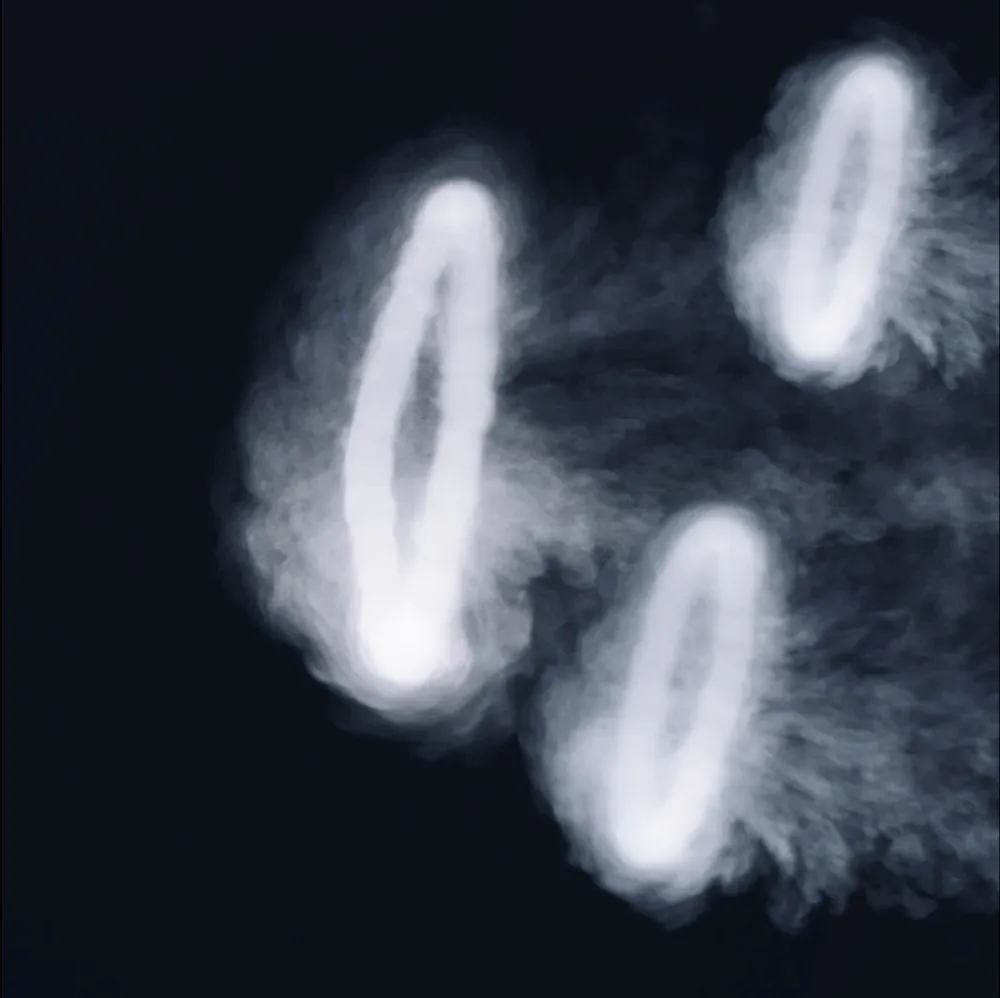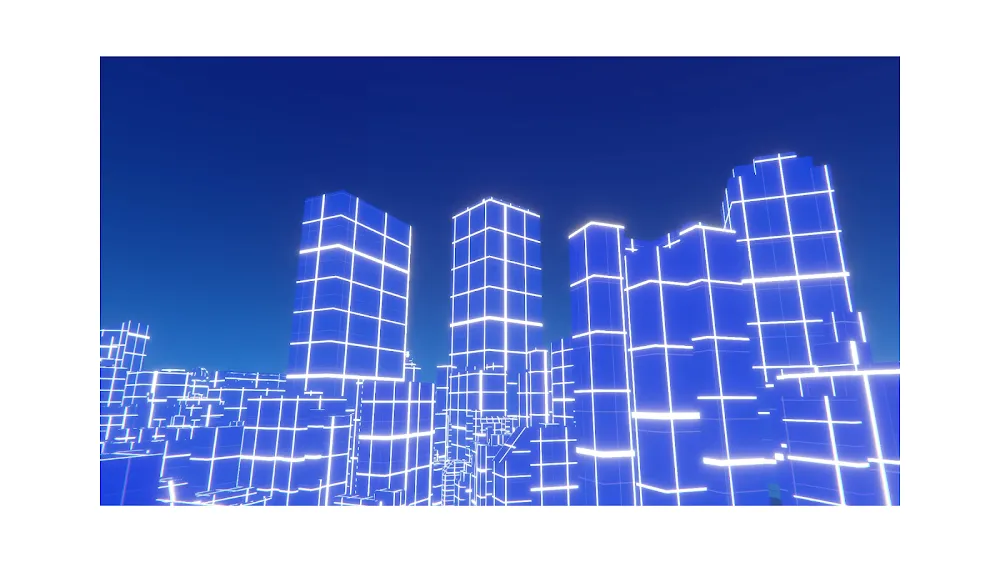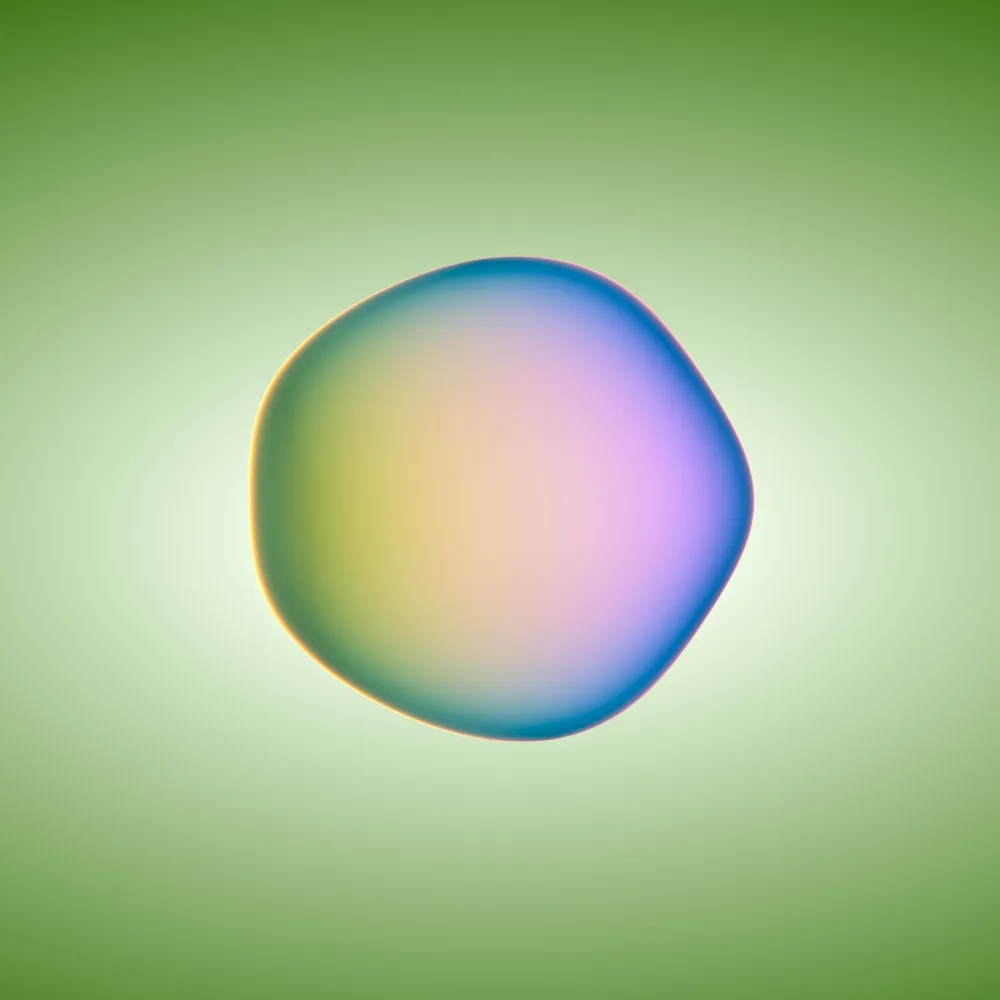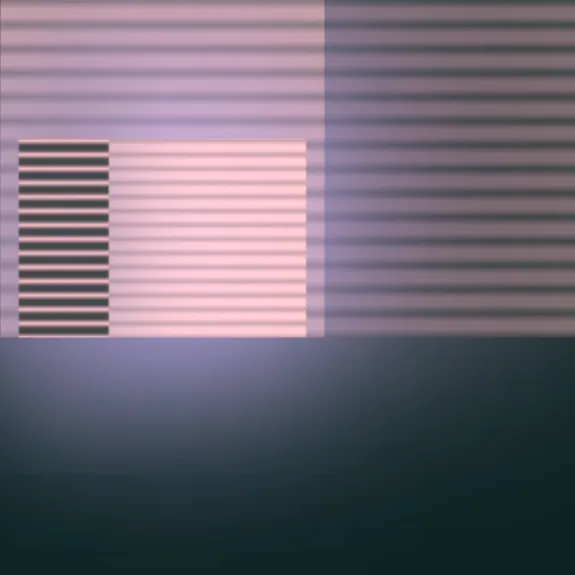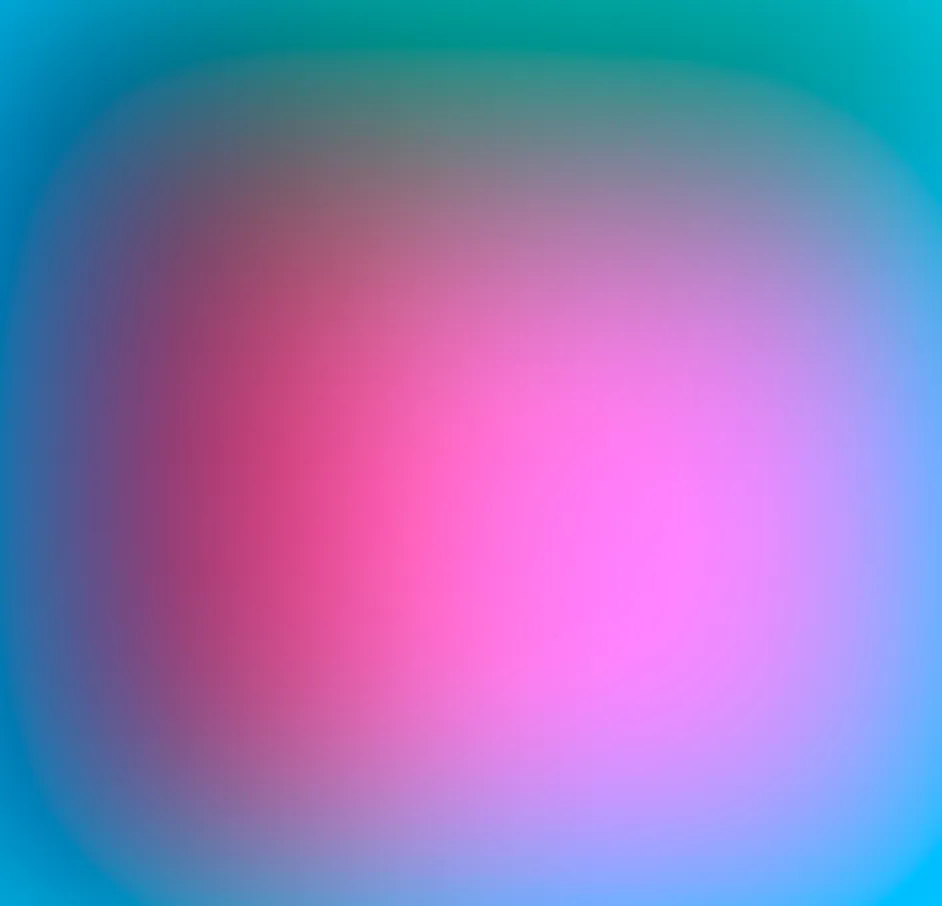Subscribe to get the latest on artists, exhibitions and more.
Between Two Worlds: In conversation with AA Murakami

Alexander Groves of AA Murakami in conversation with Mimi Nguyen.
Mimi Nguyen: I’d like to welcome everyone on the Twitter space today, and especially AA Murakami’s Alex, part of the Tokyo/London-based artist duo, known widely for their large sensory installations. I first knew about them from an installation at Superblue and the Eden Project in the UK. Last weekend in London, at the Freeze No.9 Cork Street gallery, we hosted a mini-fair with 8 galleries and presented 13 artists bridging traditional art with the blockchain space. It was incredible to see the interest in digital and web3 and it's an honor to present artists like AA Murakami. Welcome, Alex.
Alexander Groves: Thank you for having me. I'm representing our studio, and it's just myself today. Azusa isn’t here, but as Mimi mentioned, we're based in Japan. This is actually our fourth NFT project, which is thrilling for us. We're collaborating with Verse to create something that's likely the most generative project we've done to date, and I'm eager to dive into it.
Mimi Nguyen: Let's start at the beginning. Was last December's project your first foray into NFTs when we first met?
Alexander Groves: Yes, that’s correct. We debuted last year with a series called 'Floating World Genesis,' which is deeply rooted in the themes of our physical installations that often feature bubbles and explore the primordial origins of life. This series not only echoes the installations we've already created with bubbles but also anticipates future installations inspired by the NFT. We wanted to go beyond the concept of creating an NFT as a mere souvenir or a simple replication of our real-life work. We find it more compelling to let our work with code and generative processes inform and enhance our real-life installations. In line with this, we're excited to present a major immersive installation in August at the M+ Museum in Hong Kong, named 'Floating World.' It will be the largest installation we've done to date and is directly inspired by the 'Floating World Genesis' NFT."

Mimi Nguyen: With the upcoming release titled 'Between Two Worlds,’ you've essentially become an artistic studio straddling two worlds—physical and web3. What was it like transitioning from creating large physical installations to working in digital and blockchain spaces?
Alexander Groves: The transition presents its challenges, mainly because they are quite different realms. Keeping up with both physical and digital spaces is our biggest challenge. We aren’t as active on Twitter or Discord as we could be, but the exciting part for us lies in exploring different dimensions, the intangible and tangible. Blockchain has opened up a new dimension for our work. It's just a ledger that doesn't dictate how its contents should manifest in our world. Currently, NFTs are predominantly experienced on screens, but we see a future where they can be part of immersive installations. Our work with Verse is based on our neon pieces—the palettes, the glow, the arrangement. The generative process leads to outcomes we could never create ourselves. We're integrating these digital entities back into neon forms, and we see our role as creating light that can traverse between the tangible and intangible realms.

Mimi Nguyen: It's fascinating that you view NFTs as an additional dimension to your practice, not just replicating physical art but enhancing it with features and interactivity that aren't possible in the physical world. But let's discuss the neon component, which arrived after the exhibition opened. Could you share more about it?
Alexander Groves: Neon lighting, with its century-long history, revolutionized the way we use electric light by passing an electric current through noble gases, each emitting its own distinct hue. Beyond noble gases, mixtures like carbon dioxide can also produce spectacular neons. Our fascination with this medium has led us to develop a method of creating almost zero-atmosphere conditions within a glass tube, then bombarding it—cleaning the tube by burning off impurities. After this, we introduce a small amount of a noble gas like neon, krypton, argon, mercury, helium, or nitrogen. An electric current passed through this gas mixture creates a palette of ethereal colors and effects.
Working with neon is like harnessing the raw magic of the cosmos, given that over 99% of the universe is plasma, including all stars. It's a surreal experience to manipulate this fourth state of matter, which feels both otherworldly and abundantly universal at the same time. The result is a mesmerizing light, purer than what we get from an RGB LED, reminiscent of the unadulterated spectrum of colors you might see through a prism.
For the past five years, our experiments with neon have broken new ground. We've moved away from traditional methods to an innovative system we devised that employs an electromagnetic field to energize a mixture of gases within the tube. This system doesn't rely on the color of the glass or phosphorescent coatings to change the neon's color; instead, the gas itself emits varying colors when influenced by the electromagnetic field. The outcome is a glowing orb with a vibrant, amber-orange center that fades into an atmospheric, cool blue edge—a spectacle we've never before achieved in neon art.
In collaboration with a talented coder, we've been replicating these effects and infusing various traits and color palettes into our works. This process has opened up possibilities for creating neon art with characteristics we hadn't imagined possible, leading to a harmonious blend of precision and spontaneity, order and chaos.

Mimi Nguyen: This innovative approach with plasma and gas diffusion, is this your proprietary technology?
Alexander Groves: Yes, it’s proprietary. Our work is a collaborative effort with engineers to create what we call ephemeral tech—our own unique technology that isn't reliant on conventional tech like projectors. It's about creating technology that can manifest digital code into the world in non-traditional ways. Our aim isn’t to utilize typical interfaces but to invent new ones that can, for example, generate misty bubbles or plasma effects. We've constructed rooms that simulate lightning or emit waves of energy with fog rings. These are the experiences you saw at the Eden project. In embracing blockchain and NFTs, we're interested in how these ephemeral experiences can be transformed into something that isn’t confined to a screen but can be walked through in a museum, creating a physical embodiment of a digital NFT.
Mimi Nguyen: How did you manage the transition from the tangible neon creations to the digital realm of NFTs?
Alexander Groves: The transition was about capturing the essence rather than making a carbon copy. When we look at a painting, for instance, we don't just see a replica of reality; we see the artist's interpretation through the medium. Similarly, we aim to distill the qualities, the palette, and the composition of our neon works into a digital format. It was important to us to create something that acknowledges its digital nature while embodying the spirit of the original work. Generative code in NFTs offers us a sandbox of sorts, a space where we can experiment and generate a multitude of outcomes—far more than we could feasibly create in a physical studio. This opens up new avenues for creation and allows us to reimagine these digital outputs back into the physical space.
Mimi Nguyen: Once the NFTs are minted, how do you envision bringing those experiences back into the physical world?
Alexander Groves: The process of re-physicalizing a digital NFT is quite fascinating. For example, if we select an NFT with a particular color palette, we could replicate those colors in neon by carefully mixing gases and phosphorescent coatings. Imagine a series of neon lights creating a certain hue, set against a painted background on a large metal panel. It’s about creating a dialogue between the luminous quality of neon and the static nature of the background, crafting a gradient where these two elements meet and interact. We're envisioning pieces that are large, almost like paintings, but the medium is light itself—neon light that glows and brings the digital into a tangible form.
Mimi Nguyen: The upcoming series of 150 works—is this going to be a pre-curated selection, or will there be an element of generative surprise?
Alexander Groves: We are fully embracing the generative process. It's the aspect of surprise that excites us, much like in our installations where we might set up the conditions for a particular effect but then let the natural laws take over. There's a parallel here with nature—consider the genetic code and its vast expressions in the physical world. The beauty lies in the unpredictable, the way elements interact with each other and the environment. We want to capture this in our digital work, allowing the code to generate a variety of outcomes, some anticipated and others completely unforeseen.
Mimi Nguyen: In your physical work, do you allow for unpredictability, and how do you see that shaping your digital ventures?
Alexander Groves: Unpredictability is a crucial part of our physical work. Art often benefits from the serendipitous—the accidental discoveries that arise during the creative process. It's this element of the unknown that we find so compelling, and we strive to translate this into our digital work. The potential of generative code to create unexpected beauty is something we want to explore further. We believe in a future where art moves fluidly between digital and physical realms, capturing the ephemeral nature of an experience and the permanence of a blockchain. It's about that balance between the transient and the eternal, and finding ways to express that through our work.
Mimi Nguyen: With your unique position in the installation art space entering Web3, what reflections do you have for other artists considering this leap?
Alexander Groves: I'm cautious about offering advice since the path of creativity is deeply personal. However, from my experience, the most valuable lesson has been to lean into the capabilities of the digital medium—generative code, in our case—without attempting to confine it. By setting the parameters wide, you invite a rich diversity into the work. It's about letting go of the desire to control every aspect and instead facilitating a space where unexpected and beautiful variations can emerge. In the end, embracing this unpredictability and the potential for chaos can lead to the most rewarding and innovative art.
Mimi Nguyen: Thank you, Alex, for sharing your insights. We're excited to present your works on Verse and to see the physical neons next year.
Alexander Groves: Thank you for the opportunity, and I'm looking forward to seeing how these digital seeds grow on that little screen and beyond, especially as we prepare for our first solo show in Germany.
A.A. Murakami
A.A. Murakami, a London/Tokyo-based artist duo, are the founders of the Web3 project Floating World. Their sensory installations are an ongoing series of works that follow the tradition of artists emulating nature. In the same way ancient civilizations made structures to chart the passage of the sun or created early cave paintings to depict the natural world, A.A. Murakami pursues an innate human...
Mimi Nguyen
Mimi is a Creative Director at verse. She is a assistant professor at Central Saint Martins, University of Arts London where she leads the CSM NFT Lab. Her background is New Media Art, having previously studied at the Berlin University of the Arts (UdK) and Academy of Fine Arts in Warsaw. She now also teaches at Imperial College London, Faculty of Engineering, where she leads Mana Lab - a “Future...
